Heavy Duty Trucks
Loyal Bearings is your trusted partner for heavy-duty truck bearings. With our focus on quality, durability, and customer satisfaction, we ensure that your trucks perform at their best, reducing downtime and maintenance costs. Choose Loyal for bearings that deliver superior performance and reliability in the toughest conditions.
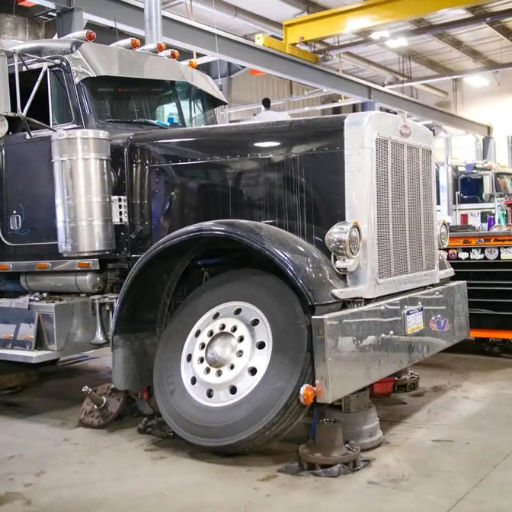
Overview
Loyal Bearings specializes in high-quality bearings for heavy-duty trucks, designed to handle extreme conditions and high loads.
Wheel Bearings: For smooth operation and high load capacity.
Transmission Bearings: Ensuring optimal performance of the transmission system.
Engine Bearings: For high-speed operations and heavy loads.
Key Features:
Durability: Made from high-grade materials for long-lasting performance.
Reliability: Precision-engineered to reduce breakdowns.
Efficiency: Minimizes friction and wear, enhancing fuel efficiency.
Loyal Bearings are suitable for long-haul trucks, construction vehicles, agricultural machinery, and mining trucks. Each bearing undergoes rigorous quality testing to meet industry standards, ensuring reliable service throughout their lifespan.
Main Bearing Product Classification Types for Heavy Duty Truck Equipment
Wheel Bearings:
Tapered Roller Bearings: Designed to handle both radial and axial loads, commonly used in wheel applications for heavy-duty trucks.
Cylindrical Roller Bearings: Known for their high radial load capacity, often used in wheel hubs where space is limited.
Transmission Bearings:
Ball Bearings: Provide high-speed performance and low friction, used in various transmission components.
Needle Roller Bearings: Suitable for applications with limited space and high load capacity, commonly found in transmission systems.
Engine Bearings:
Main Bearings: Support the crankshaft, ensuring smooth rotation and handling high loads and speeds.
Connecting Rod Bearings: Located in the connecting rods, these bearings handle high-impact forces from the pistons.
Differential Bearings:
Tapered Roller Bearings: Used in differentials to manage the combination of radial and axial loads.
Spherical Roller Bearings: Ideal for applications with misalignment and heavy loads, ensuring durability and reliability.
Clutch Release Bearings:
Angular Contact Ball Bearings: Handle both radial and axial loads, providing smooth operation and longevity in clutch systems.
Suspension Bearings:
Spherical Plain Bearings: Used in suspension systems to accommodate angular misalignment and provide smooth movement.
Bushings: Provide cushioning and reduce friction in suspension components.
Features and Benefits:
High Load Capacity: Designed to withstand the heavy loads typical in truck applications.
Durability: Made from high-grade materials to ensure long-lasting performance under harsh conditions.
Reliability: Precision engineering reduces the risk of breakdowns and extends the service life.
Efficiency: Minimizes friction and wear, contributing to better fuel efficiency and overall vehicle performance.
Loyal Bearings ensures each bearing type undergoes rigorous quality testing to meet industry standards, providing dependable performance in all heavy-duty truck applications.
Timken Tapered Roller Bearings for Heavy Duty Trucks
| Type | Bore Diameter | Outside Diameter | Width | Brand |
|---|---|---|---|---|
| 71425/71750 | 107.95 mm | 190.5 mm | 47.625 mm | Timken |
| 93800/93125 | 203.2 mm | 317.5 mm | 63.5 mm | Timken |
| 93825/93127CD | 203.2 mm | 317.5 mm | 104.775 mm | Timken |
| 94687/94113 | 174.625 mm | 288.925 mm | 63.5 mm | Timken |
| M238849/M238810 | 187.325 mm | 269.875 mm | 55.563 mm | Timken |
Timken’s Tapered Roller Bearings are ideal for heavy-duty trucks due to their ability to handle high loads and harsh conditions. They provide superior performance in wheel hubs, axle systems, and differentials, ensuring durability and load capacity.
- Axle Systems: Timken’s tapered roller bearings are ideal for axle systems due to their capacity to handle high loads and harsh operating conditions.
- Differentials: Timken bearings are used in differential assemblies, ensuring smooth and reliable power transmission.
- Wheel Bearings: Known for their durability and load capacity, Timken bearings are widely used in truck wheel applications.
Applications of Timken Bearings in Heavy Duty Trucks
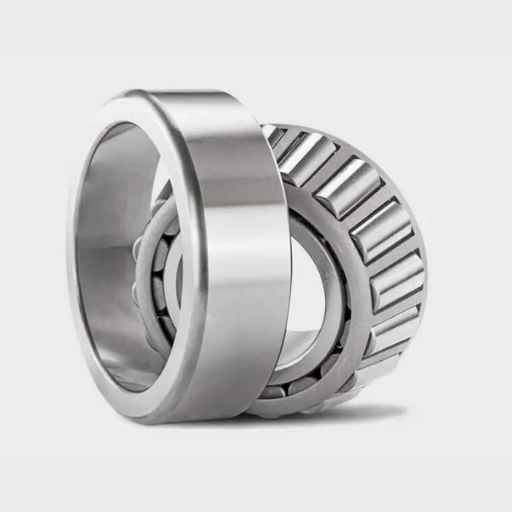
Table: Key Considerations When Installing Heavy Duty Truck Bearings
| Consideration | Details |
| Proper Tools and Equipment | Use correct tools to avoid damage; ensure tools are clean and in good condition. |
| Cleanliness | Keep the work area and components clean; use gloves or clean cloths to handle bearings. |
| Inspection | Inspect bearings and parts for damage or wear; replace worn or damaged components. |
| Correct Orientation | Install bearings in the correct orientation; follow manufacturer’s markings and instructions. |
| Lubrication | Apply the appropriate lubricant; ensure it is clean and free of contaminants. |
| Press-Fit Method | Use a press-fit method; apply even pressure around the bearing. |
| Avoid Impact | Do not use hammers directly on bearings; use a soft-faced mallet if necessary. |
| Temperature Considerations | Be mindful of temperature differences; pre-heat bearings if required for easier installation. |
| Sealing | Install seals or shields properly to prevent contamination and retain lubrication. |
| Torque Specifications | Tighten fasteners to specified torque values; avoid over-tightening. |
| Alignment | Ensure proper alignment within housings and with other components. |
| Testing | Rotate bearing assembly to check for smooth operation and proper seating; listen for unusual noises. |
| Documentation | Record installation details, including part numbers, date, and observations. |
Common Problems That May Occur During Use of Heavy Duty Truck Bearings
Premature Wear:Bearings may wear out faster than expected due to improper lubrication, contamination, or misalignment. Ensuring proper lubrication, cleanliness, and alignment during installation and maintenance can help prevent this issue.
Overheating:Bearings can get excessively hot during operation, often due to overloading, insufficient lubrication, or poor ventilation. To mitigate this, reduce the load on the bearings, improve lubrication practices, and ensure adequate ventilation around the bearing assembly.
Noise:Unusual sounds such as grinding, squeaking, or knocking can indicate issues like contamination, misalignment, or bearing damage. Regular cleaning, lubrication, and inspection for alignment and damage can help address these noise issues.
Vibration:Excessive vibration or oscillation can occur due to imbalance, misalignment, or loose components. Balancing the components, realigning the bearings, and tightening all connections can reduce vibration.
Corrosion:Rust or other forms of corrosion may appear on bearings if exposed to moisture or due to inadequate sealing and improper storage. Enhancing sealing methods, storing bearings correctly, and using corrosion-resistant materials can prevent corrosion.
Cracking or Spalling:Surface damage such as cracks or flaking material can result from overloading, impact damage, or material defects. Avoiding overloading, handling bearings with care, and inspecting for defects before use can help prevent these issues.
Seizure:Bearings may lock up and stop rotating, typically due to insufficient lubrication, contamination, or excessive load. Ensuring adequate lubrication, maintaining cleanliness, and adhering to load limits can prevent bearing seizure.
Fretting:Small wear marks or pits may form on the bearing surface due to micro-movements, vibration, or a poor fit. Ensuring a tight fit, reducing vibration, and using proper mounting techniques can minimize fretting.
False Brinelling:Indentation marks on the bearing raceway can occur from vibration while stationary or insufficient lubrication. Minimizing vibration and maintaining proper lubrication even when the bearing is stationary can prevent false brinelling.
Understanding these common problems and their causes allows for better preventive measures, ensuring optimal performance and longevity of heavy-duty truck bearings through regular maintenance and proper installation practices.
Product clearance requirements
Ensuring the correct clearance is critical in the installation and use of heavy truck bearings. Here are some key clearance requirements:
Radial clearance:
This refers to the space between the inner and outer races of the bearing.
It must be within the manufacturer’s specified range to accommodate thermal expansion and load changes.
Too little clearance can cause excessive friction, overheating and premature wear; too much clearance can cause vibration and noise.
Axial clearance:
This refers to the internal space along the bearing axis.
Proper axial clearance helps with thermal expansion and prevents excessive axial loads.
Too little clearance can cause excessive axial forces and lead to bearing failure; too much clearance can cause instability and misalignment.
Preload:
Eliminate internal clearance by applying a continuous axial load, increasing rigidity.
Proper preload can reduce noise, vibration and axial movement.
Excessive preload can cause premature wear, overheating and shortened bearing life.
Temperature effects:
High or low temperature applications may require clearance adjustment.
Temperature changes can affect bearing clearance, and the effect of operating temperature on clearance needs to be considered.
Load considerations:
The type and size of load (radial, axial, combined) will affect the required clearance.
Heavier loads may require larger clearances to prevent excessive contact stresses and heat generation.
Mounting and Fitting:
Proper mounting techniques are critical to maintaining designed clearances.
Overtightening or improper mounting can cause bearing races to deform, changing clearances.
Lubrication:
Lubrication plays an important role in maintaining proper clearances.
Proper lubrication reduces friction, prevents metal-to-metal contact, and helps dissipate heat.
Wear and Maintenance:
Over time, bearings may wear, affecting clearances.
Perform regular inspections and maintenance to monitor and adjust clearances as needed.
By following these product clearance requirements and considering specific application conditions, you can ensure reliable performance and extended life of your heavy-duty truck bearings.
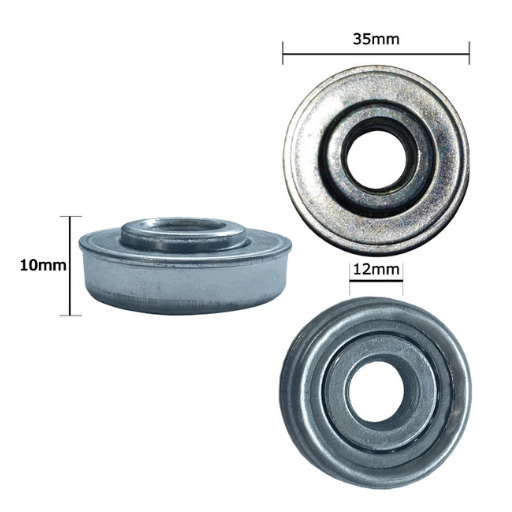
Table: Product Sealing Requirements for Heavy Duty Truck Bearings
| Requirement | Description |
| Prevent Contamination | Seals must effectively block contaminants like dust, dirt, and moisture from entering the bearing. |
| Retain Lubricant | Seals should effectively retain lubricants inside the bearing to reduce friction and wear. |
| High Temperature Resistance | Seals must withstand high temperatures, especially in heavy load and high-speed applications. |
| Chemical Resistance | Seals should resist degradation from exposure to lubricants, cleaners, and other chemicals. |
| Low Friction | Seals must have low friction properties to reduce energy loss and prevent overheating. |
| Wear Resistance | Seals should be highly wear-resistant to maintain performance over extended periods. |
| Adaptability | Seals must accommodate dynamic movements and thermal expansion without failing. |
| Ease of Installation and Maintenance | Seals should be easy to install and replace, minimizing maintenance time and costs. |
Usage Environment Requirements for Heavy Duty Truck Bearings
Temperature Range:
Bearings must be able to operate effectively within the temperature ranges they will encounter. This includes withstanding both high and low temperatures without losing performance or integrity.
Contaminant Exposure:
The environment should be controlled to minimize exposure to contaminants such as dust, dirt, and moisture. Effective sealing mechanisms are crucial to protect the bearings from these elements.
Load and Stress Conditions:
Bearings should be selected and designed to handle the specific loads and stresses they will encounter in their operating environment. This includes both radial and axial loads.
Corrosion Resistance:
If the bearings are used in environments where they are exposed to corrosive elements (such as salt, chemicals, or moisture), they must be made from materials or coatings that provide adequate corrosion resistance.
Vibration and Shock:
The operating environment should account for any vibration or shock loads. Bearings must be able to absorb and withstand these dynamic forces without damage.
Lubrication:
Proper lubrication must be maintained to ensure smooth operation and to prevent overheating and wear. The type of lubricant used should be appropriate for the environmental conditions.
Pressure Conditions:
In environments where the bearings are subjected to high pressures, they must be designed to maintain their structural integrity and performance.
By adhering to these usage environment requirements, the performance and lifespan of heavy-duty truck bearings can be optimized, ensuring reliability and efficiency in demanding conditions.
Temperature Requirements for Heavy Duty Truck Bearings
Operating Temperature Range:
Bearings must be capable of operating effectively within the expected temperature range of the application. This includes both the lower and upper extremes of the temperature spectrum they will encounter.
High-Temperature Resistance:
Bearings should be designed to withstand high temperatures without degrading in performance. This involves using materials that can tolerate heat and maintaining proper lubrication that doesn’t break down under high heat.
Low-Temperature Performance:
Bearings must also function efficiently in low-temperature environments. This requires selecting materials that remain ductile and lubricants that retain their viscosity at low temperatures.
Thermal Expansion:
Consideration of thermal expansion is critical. Bearings and their housings must be designed to accommodate changes in size due to temperature fluctuations, preventing excessive stress and potential failure.
Heat Dissipation:
Effective heat dissipation methods should be in place to prevent bearings from overheating during operation. This can involve using cooling systems or selecting materials that conduct heat away efficiently.
Lubricant Stability:
The lubricants used must remain stable and effective across the full temperature range. This includes preventing breakdown at high temperatures and avoiding thickening or solidifying at low temperatures.
By meeting these temperature requirements, heavy-duty truck bearings can maintain their performance and longevity even in challenging thermal environments.
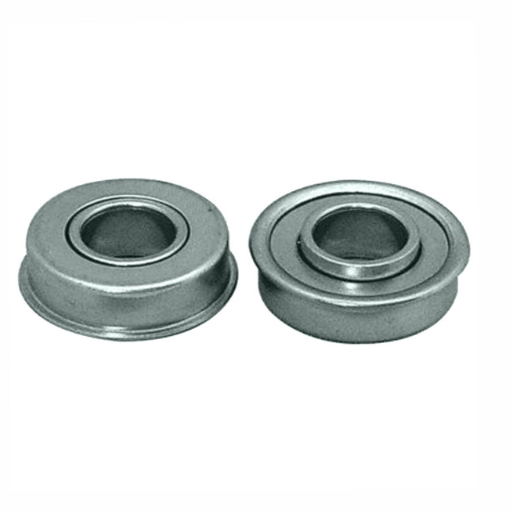
Lubricant Selection for Heavy Duty Truck Bearings
Synthetic Oils:
Suitable for high-temperature and high-speed applications.
Provide excellent thermal stability and oxidation resistance.
Mineral Oils:
Cost-effective option for general use.
Adequate for moderate temperature and speed applications.
Greases with EP (Extreme Pressure) Additives:
Ideal for heavy load conditions.
Provide superior protection against wear and tear.
High-Temperature Greases:
Designed for applications with continuous exposure to high temperatures.
Maintain consistency and lubrication properties at elevated temperatures.
Multi-Grade Oils:
Offer a range of viscosities for varying temperature conditions.
Suitable for environments with fluctuating temperatures.
Low-Temperature Greases:
Formulated to remain fluid and effective in cold conditions.
Ensure proper lubrication at low temperatures.
Biodegradable Lubricants:
Environmentally friendly option.
Suitable for applications where environmental impact is a concern.
Water-Resistant Greases:
Provide excellent protection in wet and humid conditions.
Prevents washout and maintains lubrication.
Choosing the right lubricant is crucial to ensuring the optimal performance and longevity of heavy-duty truck bearings.
Bearing Types for Heavy Duty Trucks
Tapered Roller Bearings:
Ideal for applications requiring the ability to handle combined radial and axial loads.
Commonly used in wheel hubs and axle systems due to their durability and load capacity.
Cylindrical Roller Bearings:
Suitable for high radial load capacities.
Often used in transmission and differential applications where radial loads are predominant.
Deep Groove Ball Bearings:
Versatile and capable of handling moderate radial and axial loads.
Used in various truck components including alternators and pumps.
Spherical Roller Bearings:
Designed to accommodate misalignment and handle heavy radial and axial loads.
Typically used in suspension systems and areas with shaft deflections.
Angular Contact Ball Bearings:
Excellent for high-speed applications with combined loads.
Commonly found in truck transmissions and gearboxes.
Needle Roller Bearings:
Compact with high load capacity, ideal for limited radial space applications.
Used in gearboxes and other compact truck components.
Thrust Bearings:
Specifically designed to handle axial loads.
Used in applications such as clutch systems and steering mechanisms.
Self-Aligning Ball Bearings:
Accommodate misalignment and moderate loads.
Suitable for applications where shaft deflections are expected.
Selecting the appropriate bearing type depends on the specific requirements of the truck component, including load capacities, alignment issues, speed, and environmental conditions.
Bearing Life for Heavy Duty Trucks
Bearing life in heavy-duty trucks is determined by the bearing’s ability to withstand the operational conditions and stresses it encounters. Properly selected and maintained bearings can provide extended service life, ensuring reliable performance. Regular lubrication, appropriate load management, and protection from contaminants are crucial to maximizing bearing lifespan. Bearings from reputable manufacturers, designed for specific truck applications, tend to offer better durability and reliability. Regular inspections and timely maintenance help detect and address issues early, further prolonging bearing life. By focusing on these aspects, bearing life in heavy-duty trucks can be optimized for long-term efficiency and performance.
Basic Dynamic Load Rating and Fatigue Life
Basic Dynamic Load Rating (C):
The Basic Dynamic Load Rating is a fundamental parameter used to estimate the bearing’s capability to endure dynamic loads during operation. It represents the constant load under which a bearing can theoretically achieve a life of one million revolutions. The rating helps in comparing the load-carrying capacities of different bearings and selecting the appropriate one for a specific application.
Fatigue Life (L10 Life):
Fatigue life, often expressed as L10 life, refers to the expected lifespan of a bearing before 10% of a large group of identical bearings are likely to fail due to fatigue. The L10 life is calculated based on the bearing’s load and speed conditions, using the Basic Dynamic Load Rating. It provides a reliable estimate of the bearing’s durability under specified operating conditions, helping in planning maintenance and replacement schedules to avoid unexpected failures.
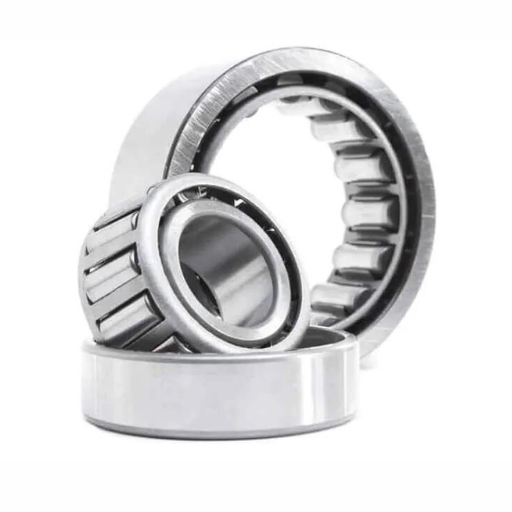
Dynamic Equivalent Load
The Dynamic Equivalent Load is a calculated value representing the load that, if applied constantly to a bearing, would have the same effect on the bearing’s life as the actual varying operational loads. It simplifies complex load conditions into a single, consistent load value for analysis. This load is used in conjunction with the Basic Dynamic Load Rating to determine the bearing’s expected fatigue life, ensuring the selected bearing can handle the real-world stresses and loads it will encounter.
Basic Static Load Ratings and Static Equivalent Loads
Basic Static Load Ratings (C0):
The Basic Static Load Rating (C0) represents the maximum load that a bearing can withstand without experiencing permanent deformation of the rolling elements or raceways. This rating is critical for applications where bearings are subjected to heavy loads while stationary or at very low speeds. It ensures the bearing can maintain its structural integrity under static conditions.
Static Equivalent Loads:
The Static Equivalent Load is the hypothetical load that, if applied to a bearing, would produce the same maximum stress as the actual combination of static radial and axial loads. This simplified load value helps in evaluating whether the bearing can support the expected static loads without excessive deformation or damage, ensuring reliability and performance in static or low-speed applications.
Bearing Tolerances
Bearing tolerances define the allowable variations in the dimensions and geometry of bearings from their nominal specifications. These tolerances ensure bearings fit and function correctly within their applications. Key aspects include dimensional tolerances, which cover the bore diameter, outer diameter, and width of the bearing, and geometric tolerances, which address parameters like roundness, cylindricity, and parallelism. Additionally, running accuracy, including radial runout, axial runout, and axial clearance, affects the bearing’s rotational accuracy and overall performance. Proper adherence to bearing tolerances is essential for ensuring reliability, performance, and longevity in various applications.
Fits and Internal Clearances
Fits:
Bearing fits refer to the relationship between the bearing and the shaft or housing it is installed in. Proper fits ensure that the bearing can handle the operational loads and maintain its performance. Common fits include interference fits, where the bearing is slightly larger than the shaft or housing, and clearance fits, where there is a slight gap allowing for easy assembly and potential thermal expansion.
Internal Clearances:
Internal clearance in a bearing refers to the amount of internal free movement possible between the rolling elements and the raceways. This clearance can be radial (perpendicular to the shaft) or axial (parallel to the shaft). Proper internal clearances are crucial for accommodating thermal expansion, load conditions, and ensuring smooth operation. Too much clearance can lead to noise and reduced precision, while too little can cause increased friction and heat, leading to premature wear and failure.
Lubrication
Lubrication is essential for the proper functioning and longevity of bearings. It reduces friction and wear, prevents overheating, and protects against contamination and corrosion. There are various types of lubricants used for bearings, including oils and greases, each suited for different applications and operating conditions. Proper lubrication involves selecting the right type of lubricant, applying the correct amount, and maintaining it over the bearing’s operational life. Regular monitoring and re-lubrication can help ensure optimal performance and extend the bearing’s service life.
Materials for Bearing Rings and Rolling Elements
Bearing rings and rolling elements are typically made from high-quality materials to ensure durability, performance, and resistance to wear and fatigue. Common materials include:
Chrome Steel: Widely used due to its high hardness, wear resistance, and fatigue strength.
Stainless Steel: Offers excellent corrosion resistance, making it suitable for applications in harsh environments or where hygiene is critical.
Ceramics: Used for high-speed and high-temperature applications, providing low friction, high stiffness, and resistance to corrosion and wear.
Carbon Steel: Employed for lower-load applications, offering good performance at a lower cost.
Specialty Alloys: Designed for extreme conditions, providing superior performance in terms of strength, toughness, and resistance to corrosion and high temperatures.
These materials are selected based on the specific requirements of the bearing application, including load, speed, temperature, and environmental conditions.
Introduction to Major Brands of Heavy Duty Truck Bearings
When selecting bearings for heavy-duty trucks, several major brands stand out due to their reputation for quality, performance, and innovation. Here is an overview of some of the top brands and the differences between them:
SKF:
Overview: SKF is a Swedish company known for its high-quality bearings and extensive range of products.
Strengths: High precision, durability, and advanced technology. SKF often integrates sensors and monitoring solutions into their bearings for predictive maintenance.
Unique Offerings: SKF Insight technology for condition monitoring and predictive maintenance.
Timken:
Overview: An American manufacturer with a long history of producing bearings for heavy-duty applications.
Strengths: Strong focus on tapered roller bearings, known for their ability to handle high loads and harsh conditions.
Unique Offerings: Extensive range of tapered roller bearings and integrated bearing assemblies.
NSK:
Overview: A Japanese company known for its innovation and high-performance bearings.
Strengths: Advanced materials and manufacturing processes, providing high reliability and performance.
Unique Offerings: Proprietary heat treatment processes and high-temperature grease options.
FAG (Schaeffler Group):
Overview: A German company recognized for its engineering excellence and comprehensive bearing solutions.
Strengths: High precision, robust design, and a wide range of bearing types.
Unique Offerings: X-life bearings, which offer extended service life and improved performance.
NTN:
Overview: Another leading Japanese manufacturer, NTN is known for its innovative solutions and high-quality bearings.
Strengths: Advanced engineering and a focus on energy efficiency and low friction.
Unique Offerings: Hybrid ceramic bearings and self-lubricating bearings.
INA (Schaeffler Group):
Overview: Alongside FAG, INA is part of the Schaeffler Group, specializing in needle roller bearings and linear motion products.
Strengths: Precision, reliability, and a strong focus on compact design solutions.
Unique Offerings: Needle roller bearings and linear technology products.
Koyo (JTEKT Corporation):
Overview: A Japanese company that offers a wide range of bearing solutions for various applications.
Strengths: High-quality bearings with a focus on reducing friction and enhancing efficiency.
Unique Offerings: Low-torque bearings and bearings designed for high-speed applications.
NTN-SNR:
Overview: A collaboration between NTN and SNR, providing a comprehensive range of bearings.
Strengths: Combines Japanese and European engineering excellence to offer innovative solutions.
Unique Offerings: Bearings with integrated sensors and advanced sealing technologies.
Each brand has its unique strengths and product offerings, allowing customers to choose the best solution based on their specific needs and application requirements. These differences in technology, materials, and design approaches enable these brands to cater to a wide range of heavy-duty truck applications, ensuring reliability and performance in demanding environments.
Applications of Major Bearing Brands in Heavy Duty Trucks
SKF:
Wheel Hubs: SKF’s high-precision bearings are often used in wheel hub assemblies for their durability and advanced monitoring capabilities.
Transmission Systems: SKF’s bearings with integrated sensors help in predictive maintenance and enhance the reliability of truck transmission systems.
Engine Components: SKF bearings are used in engines for their ability to withstand high temperatures and heavy loads.
Timken:
Axle Systems: Timken’s tapered roller bearings are ideal for axle systems due to their capacity to handle high loads and harsh operating conditions.
Differentials: Timken bearings are used in differential assemblies, ensuring smooth and reliable power transmission.
Wheel Bearings: Known for their durability and load capacity, Timken bearings are widely used in truck wheel applications.
NSK:
Steering Systems: NSK’s high-performance bearings provide precise control and durability in steering systems.
Drivetrain Components: NSK bearings are used in drivetrains for their advanced materials and manufacturing processes that ensure high reliability.
Suspension Systems: The robust design of NSK bearings makes them suitable for heavy-duty suspension systems.
FAG (Schaeffler Group):
Wheel Bearings: FAG’s X-life bearings are used in wheel assemblies for their extended service life and improved performance.
Transmission Bearings: FAG provides high-precision bearings for truck transmissions, ensuring smooth operation and longevity.
Chassis Components: The robust and precise design of FAG bearings supports various chassis components.
NTN:
Wheel Hubs: NTN’s hybrid ceramic bearings are used in wheel hubs for their low friction and high durability.
Engine Bearings: NTN bearings are used in engines for their ability to handle high speeds and temperatures.
Gearboxes: The advanced engineering of NTN bearings makes them suitable for gearbox applications, ensuring energy efficiency and low friction.
INA (Schaeffler Group):
Needle Roller Bearings: INA’s needle roller bearings are used in transmissions and other compact, high-load applications.
Linear Motion: INA provides solutions for linear motion applications in heavy trucks, ensuring precise and reliable movement.
Chassis and Suspension: INA bearings support various chassis and suspension components due to their compact design and high load capacity.
Koyo (JTEKT Corporation):
Wheel Bearings: Koyo’s low-torque bearings are used in wheel assemblies to enhance fuel efficiency and performance.
Transmission Bearings: Koyo provides high-speed bearings for truck transmissions, ensuring reliable and smooth operation.
Engine Bearings: The high-quality materials used in Koyo bearings make them ideal for engine applications.
NTN-SNR:
Wheel Hubs: NTN-SNR bearings with advanced sealing technologies are used in wheel hubs to prevent contamination and extend service life.
Transmission Systems: Bearings with integrated sensors from NTN-SNR enhance the reliability and maintenance of truck transmission systems.
Axle and Differential: NTN-SNR provides robust bearings for axle and differential applications, ensuring durability and performance under heavy loads.
These applications demonstrate how each brand’s unique strengths and product offerings cater to the demanding requirements of heavy-duty truck components, ensuring reliability, durability, and optimal performance.
Interchange of Bearing Products Between Major Brands
Bearings are often interchangeable between different brands, allowing flexibility in sourcing and replacement. Here are some common types of bearing interchanges and how they apply to the major brands:
Tapered Roller Bearings:
SKF: Interchangeable with Timken, NTN, FAG, and Koyo. Part numbers may differ, but dimensional specifications and load ratings are generally compatible.
Timken: Can be replaced with SKF, NSK, NTN, and FAG bearings of equivalent sizes and specifications.
NSK: Compatible with SKF, Timken, NTN, and FAG for tapered roller bearing applications.
FAG: Interchangeable with SKF, Timken, NSK, and NTN. Ensure matching part numbers and load ratings.
Koyo: Equivalent to SKF, Timken, NSK, FAG, and NTN for standard sizes and applications.
Cylindrical Roller Bearings:
SKF: Interchangeable with Timken, FAG, NTN, and NSK cylindrical roller bearings.
FAG: Can be replaced with SKF, Timken, NTN, and NSK bearings of similar specifications.
NTN: Compatible with SKF, FAG, Timken, and NSK cylindrical roller bearings.
NSK: Equivalent to SKF, FAG, Timken, and NTN for cylindrical roller bearing applications.
Timken: Interchangeable with SKF, FAG, NTN, and NSK.
Deep Groove Ball Bearings:
SKF: Interchangeable with NSK, FAG, NTN, and Koyo for standard deep groove ball bearings.
NSK: Can be replaced with SKF, FAG, NTN, and Koyo bearings of equivalent sizes.
FAG: Compatible with SKF, NSK, NTN, and Koyo deep groove ball bearings.
NTN: Equivalent to SKF, NSK, FAG, and Koyo for standard deep groove ball bearing applications.
Koyo: Interchangeable with SKF, NSK, FAG, and NTN.
Spherical Roller Bearings:
SKF: Interchangeable with FAG, Timken, NTN, and NSK spherical roller bearings.
FAG: Can be replaced with SKF, Timken, NTN, and NSK bearings of similar specifications.
NTN: Compatible with SKF, FAG, Timken, and NSK spherical roller bearings.
NSK: Equivalent to SKF, FAG, Timken, and NTN for spherical roller bearing applications.
Timken: Interchangeable with SKF, FAG, NTN, and NSK.
Angular Contact Ball Bearings:
SKF: Interchangeable with NSK, FAG, NTN, and Koyo angular contact ball bearings.
NSK: Can be replaced with SKF, FAG, NTN, and Koyo bearings of equivalent sizes.
FAG: Compatible with SKF, NSK, NTN, and Koyo angular contact ball bearings.
NTN: Equivalent to SKF, NSK, FAG, and Koyo for standard angular contact ball bearing applications.
Koyo: Interchangeable with SKF, NSK, FAG, and NTN.
Needle Roller Bearings:
INA: As a specialist in needle roller bearings, INA products are generally compatible with similar products from SKF, NTN, Timken, and Koyo.
SKF: Interchangeable with INA, NTN, Timken, and Koyo for needle roller bearings.
NTN: Compatible with INA, SKF, Timken, and Koyo needle roller bearings.
Timken: Can be replaced with INA, SKF, NTN, and Koyo needle roller bearings.
Koyo: Equivalent to INA, SKF, NTN, and Timken.
For precise interchangeability, always refer to the bearing manufacturer’s catalog or cross-reference tool to ensure that the bearings meet the required specifications, dimensions, and load ratings for the application.
Summarize
Selecting and maintaining the right bearings is crucial for the optimal performance and longevity of heavy-duty trucks. Key considerations include understanding the various types of bearings, ensuring proper material selection, and maintaining appropriate lubrication. Additionally, ensuring correct bearing tolerances, fits, and internal clearances is essential. Interchangeability between different bearing types provides flexibility in sourcing and replacement, while knowledge of dynamic and static load ratings ensures bearings can handle operational stresses. By focusing on these aspects, heavy-duty truck operators can ensure reliable, efficient, and long-lasting performance of their vehicles in demanding environments.
UCTH213-40J-300 with Setscrew(inch)
CNSORDERNO: Normal-duty(2)
TOGN: UCTH213-40J-300
SDI: B-R1/8
SD: 2 1/2
UCTH212-39J-300 with Setscrew(inch)
CNSORDERNO: Normal-duty(2)
TOGN: UCTH212-39J-300
SDI: B-R1/8
SD: 2 7/16
UCTH212-38J-300 with Setscrew(inch)
CNSORDERNO: Normal-duty(2)
TOGN: UCTH212-38J-300
SDI: B-R1/8
SD: 2 3/8
UCTH212-36J-300 with Setscrew(inch)
CNSORDERNO: Normal-duty(2)
TOGN: UCTH212-36J-300
SDI: B-R1/8
SD: 2 1/4
UCTH211-35J-300 with Setscrew(inch)
CNSORDERNO: Normal-duty(2)
TOGN: UCTH211-35J-300
SDI: B-R1/8
SD: 2 3/16
UCTH211-34J-300 with Setscrew(inch)
CNSORDERNO: Normal-duty(2)
TOGN: UCTH211-34J-300
SDI: B-R1/8
SD: 2 1/8


















